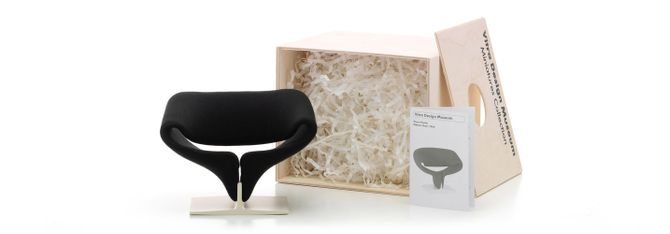
Miniatures Collection - Ribbon Chair
Pierre Paulin, 1966
The seat, backrest and armrests of the chair have a unified metal frame that is completely covered with foam upholstery and stretch fabric. The seat is mounted on a lacquered pedestal made of pressed wood. The de-velopment of the Ribbon Chair was facilitated by technological innovations during the Sixties, which led to the production of inexpensive synthetic foams. This period also saw the introduction of novel elastic fabrics that could be used to envelop a complex contoured shape without folds or intricate seams. The biomorphic, slightly resilient seat of the Ribbon Chair allows a wide variety of sitting positions and provides a high degree of seating comfort.
Miniatures Collection
Da oltre due decenni il Vitra Design Museum realizza repliche in miniatura dei pezzi più importanti della propria collezione di mobili di design. La Miniatures Collection riassume l'intera storia del mobile industriale di design, spaziando da Storicismo e Art Nouveau a Bauhaus e Nuova Oggettività, da Radical Design e Postmodernismo fino ai giorni nostri. Misuranti esattamente un sesto rispetto alle dimensioni degli storici originali, le sedie sono tutte perfettamente in scala e ricreano con precisione i più minuscoli dettagli di costruzione, materiale e colore. Gli elevati standard di autenticità comprendono addirittura le venature naturali del legno, la riproduzione delle viti e la replica delle elaborate tecniche artigianali. Tutto questo ha reso le miniature apprezzati oggetti per collezionisti e ottimi strumenti didattici per università, scuole di design e studi di architetti.